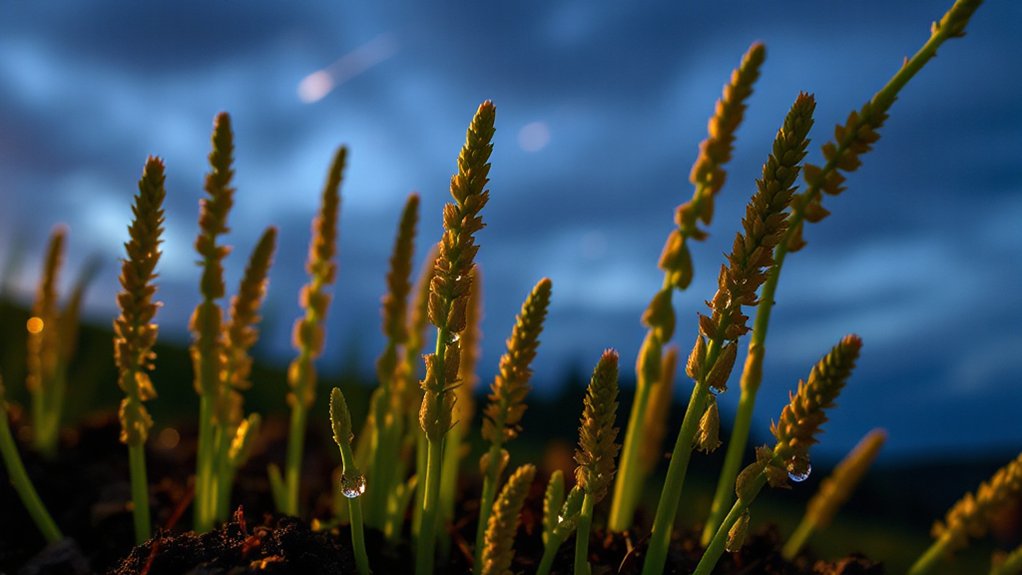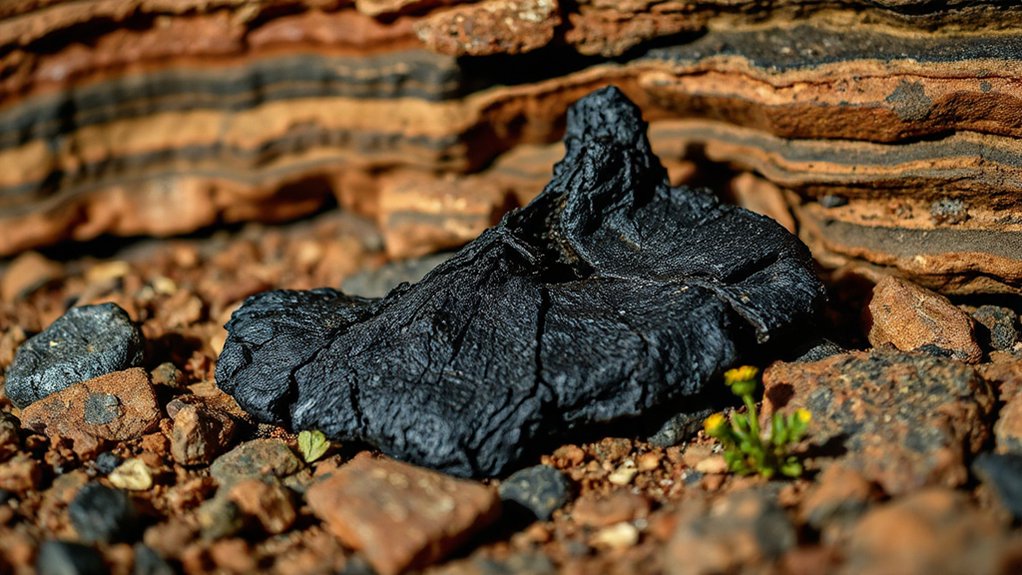Silent sentinels of Earth’s distant past, horsetails stand as living fossils in our modern world. These unassuming plants, technically called Equisetum, have been around since the Carboniferous period. Yeah, they watched dinosaurs come and go. No big deal.
What’s weird? They’ve got more in common with space rocks than your average fern. Horsetails pack their stems with silica deposits resembling glass rods—the same stuff found in some meteorites. Scientists didn’t see that coming. Their cell walls combine lignin and silica, creating a toughness that mirrors meteoritic minerals. Nature’s engineering at its finest, or just a cosmic coincidence? You decide.
Nature’s astronauts with meteorite-tough stems—horsetails are Earth’s own alien vegetation hiding in plain sight.
These botanical time travelers boast unique fatty acids with four unsaturated bonds, like the mouthful 5,11,14,17-eicosatetraenoic acid. Try saying that three times fast. These compounds keep cell membranes fluid when temperatures plummet. Smart plants.
At the Pole of Cold, horsetails don’t just survive—they thrive. They stock up on proteins, carbohydrates, and lipids before winter hits. They’re basically preppers of the plant world. When frost kills everything else, horsetails produce rhodoxanthin, an antioxidant that works better than regular plant pigments in extreme cold. Recent research by Nokhsorov and colleagues shows that species like E. varengatum and E. scirpoides dramatically increase their polyunsaturated fatty acids during cold acclimation in Northeastern Yakutia. While their protein content reaches 15% in sterile shoots, they remain of low nutritional value to most grazing animals.
Farmers hate them. Horsetails invade crops globally, colonizing disturbed soils with their underground rhizome networks. Cut them down? They’ll be back tomorrow. Literally. They’re the terminators of the plant kingdom.
Scientists track climate patterns through these living barometers. Horsetails signal waterlogged soils and shifting moisture regimes. Their spores only grow in wet conditions, making them natural climate historians. Their presence in post-glacial sites marks ecosystem recovery, telling tales of lands reborn after ice retreated.
With silica content reaching 7% by dry weight, they were once used as natural scouring pads. Ancient peoples knew their value. Modern science is just catching up. Sometimes the most ordinary-looking plants hide the most extraordinary secrets.
References
- https://pmc.ncbi.nlm.nih.gov/articles/PMC8156520/
- https://agronomyjournal.usamv.ro/pdf/2021/issue_1/Art8.pdf
- https://www.fs.usda.gov/database/feis/plants/fern/equarv/all.html
- https://pmc.ncbi.nlm.nih.gov/articles/PMC7321494/
- https://www.canada.ca/en/environment-climate-change/services/species-risk-public-registry/recovery-strategies/horsetail-spike-rush/chapter-2.html
- https://crops.extension.iastate.edu/encyclopedia/equisetum-biology-and-management








